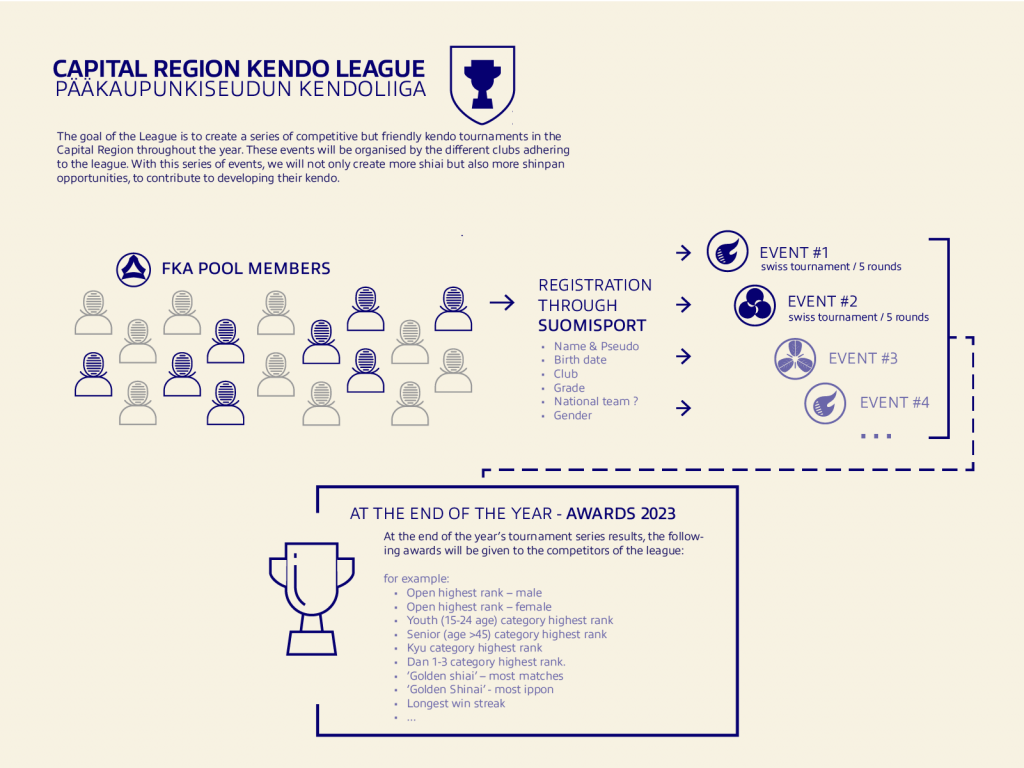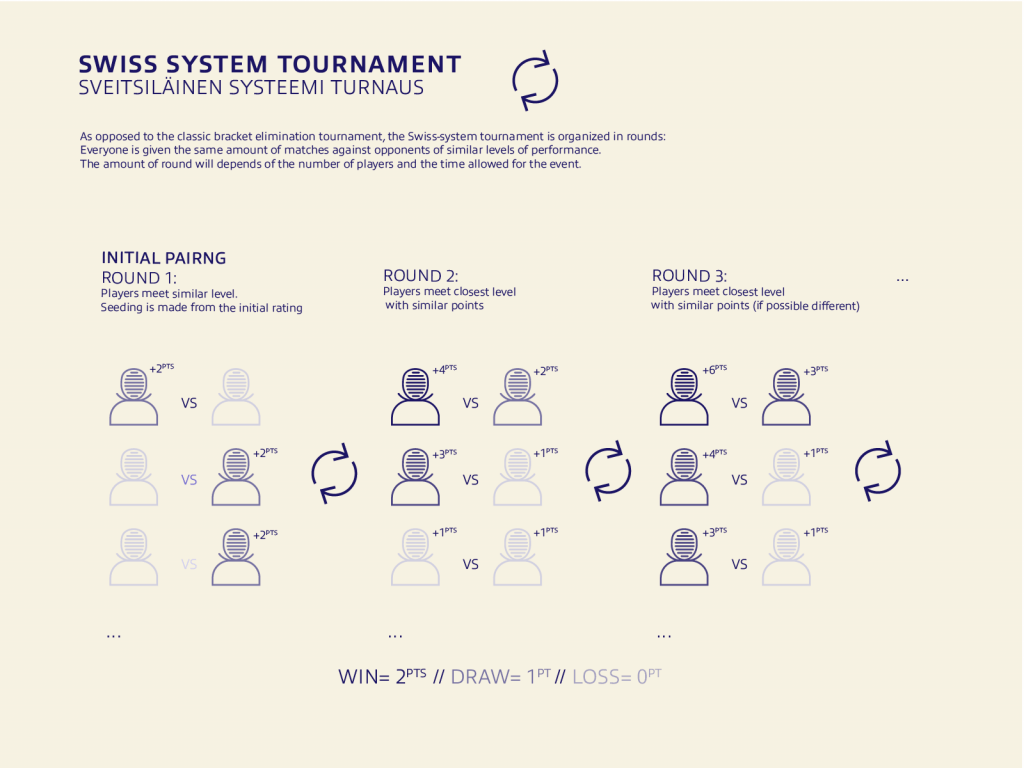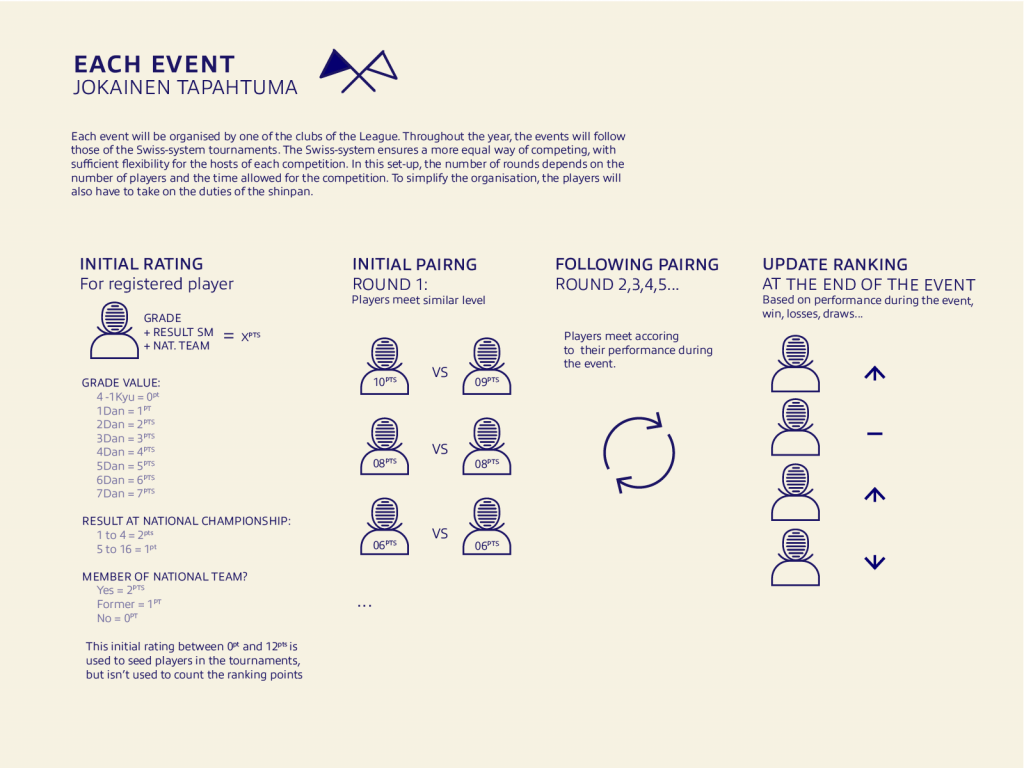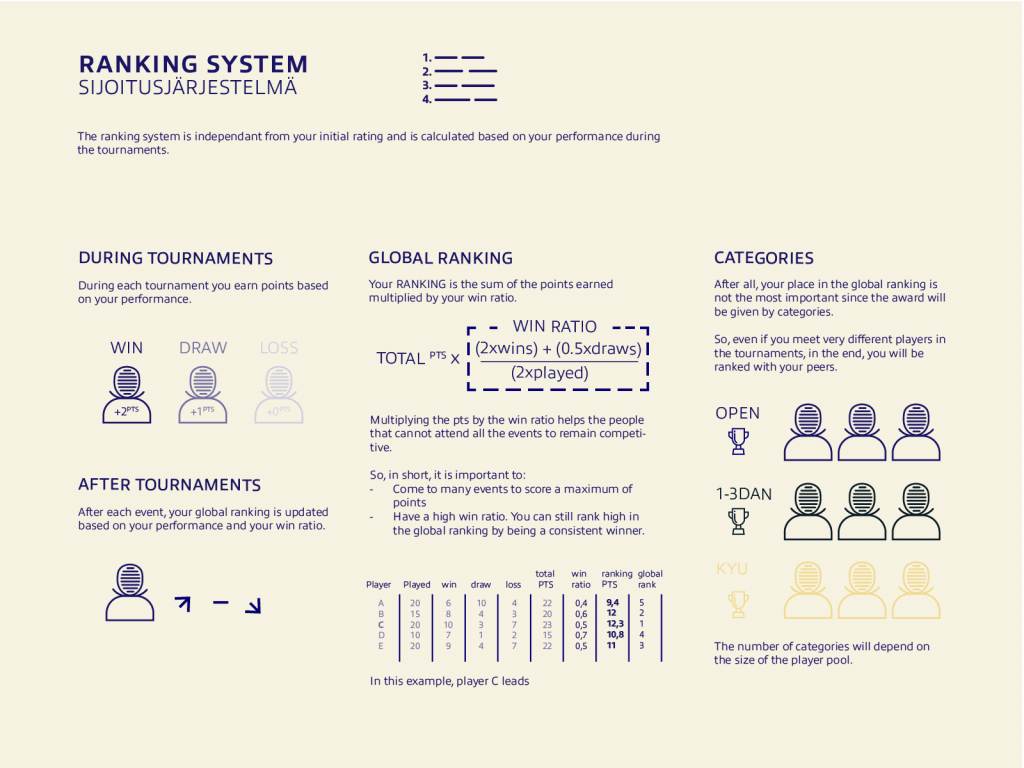Here is the success story on how we co-created our competitive regional Kendo league.
Everything started in early 2023, after the Finnish National Championship in Jyväskylä (Central Finland) we wanted more competition opportunities and practices, and discussed the possibility of having some special shiai– oriented trainings at HY on the weekends. We realized that post-COVID the possibilities for shiai are still rare in Finland – apart from the National Championship and the Weekendo seminar (this shiai-oriented summer seminar we organized few years in a row). The discussion evolved and we also observed that it could benefit more than just our members and that maybe we could organize small-scale competitions. [We also thought, that apart from the members of the national team, too few can experience competitive kendo and enter real shiai situations on a regular basis when not travelling for kendo regularly]. In our opinion, it would be beneficial for all levels to experience shiai and shinpan on a more regular basis. When following other European clubs on social media, we already saw that some of them go to some neighboring cities’s clubs for local competitions. In Finland, competitions are often solely on a national scale. The main problem with organizing a competition on a national scale is, that due to the efforts the organization itself takes, these events happen rather rarely: these events require large premises, with heavy loads of voluntary labor. The “classic” tournaments in kendo may be rather unbalanced, and those who drop out of the pool lose their chance to gain further opportunities during the competition.
So, we sent an email to create a partnership between clubs in Helsinki area (KKTI, Lebudo) to generate a local year-long kendo league/championship as the result of a succession of “competitive events.”
We proposed a series of small-scale competitive events, with lighter organization, equal shiai opportunity for all (swiss system tournament), and less pressure than “the national glory or nothing.”
To do so, we proposed to co-organize a point-based league or championship where everyone can participate but isn’t bound to come to every event. We compared the different point base systems inspired by the Swiss-system tournament and used in other individual sports like chess, tennis, sumo…
With a small effort and a lot of passion, this could work!
Both other local clubs liked the idea and joined the league, the Finnish Kendo Association FKA (Finnish Kendo Federation) backed up the concept, especially if it could be reproducible in other regions.
Note that simultaneously, Markus Ojala and his friends from Seinäjoki Kendo Club had a similar idea growing up in their region. Also note, that a similar initiative has been started in Warsaw already. Thanks for Kasper Yearwood for chatting with Merci and Félix about this!




With this working group:
- We determined the number of events we want to have throughout the year (e.g., 3 to 9 “competitive events” if each club hosts one to three events). We thought it could start small and scale up, like 3 events the first year, and if it works, more events in 2024, and later. We wanted to schedule these events at regular intervals, such as monthly or bimonthly, to give participants time to prepare and to keep the league engaging.
- We determined the initial ranking of participants: before the first event, we wanted to seed players based on their known levels rather than using a random draw. This initial ranking was used to create the first set of matches.
- We created of a points system: we developed a points system to award participants based on their performance in each event. In a Swiss-system tournament, players are awarded points for winning or drawing a match. We also wanted to incorporate a rating system to reward players for defeating higher-ranked opponents with more points but this was too ambitious for the first year, let’s hope we will be able to do it later. We used a different trick instead. Read this article only about the point system.
- Pairing participants for each event: for each event, we paired participants based on their current rankings. In a Swiss system, players with similar scores are paired against each other in each round. We had to build or use a tool for that. We had a meeting with our friend Kasper A. Yearwood from Warsaw, Poland, who was more experienced using the Swiss system with their Mameido Cup. Kasper oriented us toward Kickertool, a German app. We are hoping to build our own in the near future.
- End-of-year awards and categories: at the end of the year, award prizes or recognition based on the final rankings are given to the participants. We also divided participants into categories: Open highest rank – male / Open highest rank – female [at this point, only these two categories along the binary genders] / Kyu category highest rank / Dan 1-3 category highest rank. We even thought of fun with additional awards such as ‘Golden shiai’ – most matches / ‘Golden Shinai’ – most ippon / Longest win streak, Woodpecker Award (palokärki in Finnish) for the most tsuki over the whole tournament, or the bravest kendoka, for the one who persisted to come and fight even though they lose a lot…
Finding the right point system was probably the most tricky part of the league, there was also the challenge of finding the right tools. Of course, we also relied on volunteers who came to do scorekeeping and timekeeping, we were very lucky to have locally Markus Frey sensei and Mikko Salonen sensei for being the head shinpans in the different events. In addition to them, we also asked participants 3rd dan and above to help with these duties.
_______________
Now it’s been one year and we recently had the last event of the first season, you can find all the results here.
_______________
When all the background work was done, we chose a first date and invited everyone around to join, we made some posters and communication to explain simply. This was the text we provided people with:
How does the League work?
The league is a competitive but friendly championship around the year. Its goal is to give all kenshi more shiai and shinpan experience.
Different tournaments at regular intervals, organised by various clubs will form the League. The ranking system is installed to award the best performance in different categories at the end of the year.
How will each event work?
Every shiai event is organised inspired by the Swiss-system tournament. This means, that everyone gets the same amount of matches at each event.
How can you participate?
You register on Suomisport, at least one day before the event.
You will be given an initial rating based on your grade and known performance. At first, you will be paired with people of similar level. By winning your matches, you can climb the levels up.
And then?
You will get real shiai experience. You will also get shinpan experience.
After each event, your ranking will be updated.
Is there anything special about the shiai?
Each event will follow the rules of the European Kendo Federation (EKF).
The duration of each match is a maximum of 3 minutes. Draw (hikiwake) will be declared in case no ippons are scored or if the score is one to one. We will use the newest COVID rules. It is not allowed to use tsuki strike on Kyu people (but they can use it on dan people).
How does the ranking works?
During each tournament your wins and draws will give you a certain amount of points. After each event, your ranking is updated based on your performance, wind, losses, draws and your win ratio.
At the end of the year, we award prices in different categories based on the global ranking (male / female / junior / open / 1-3 dan / kyu …)


Leave a Reply